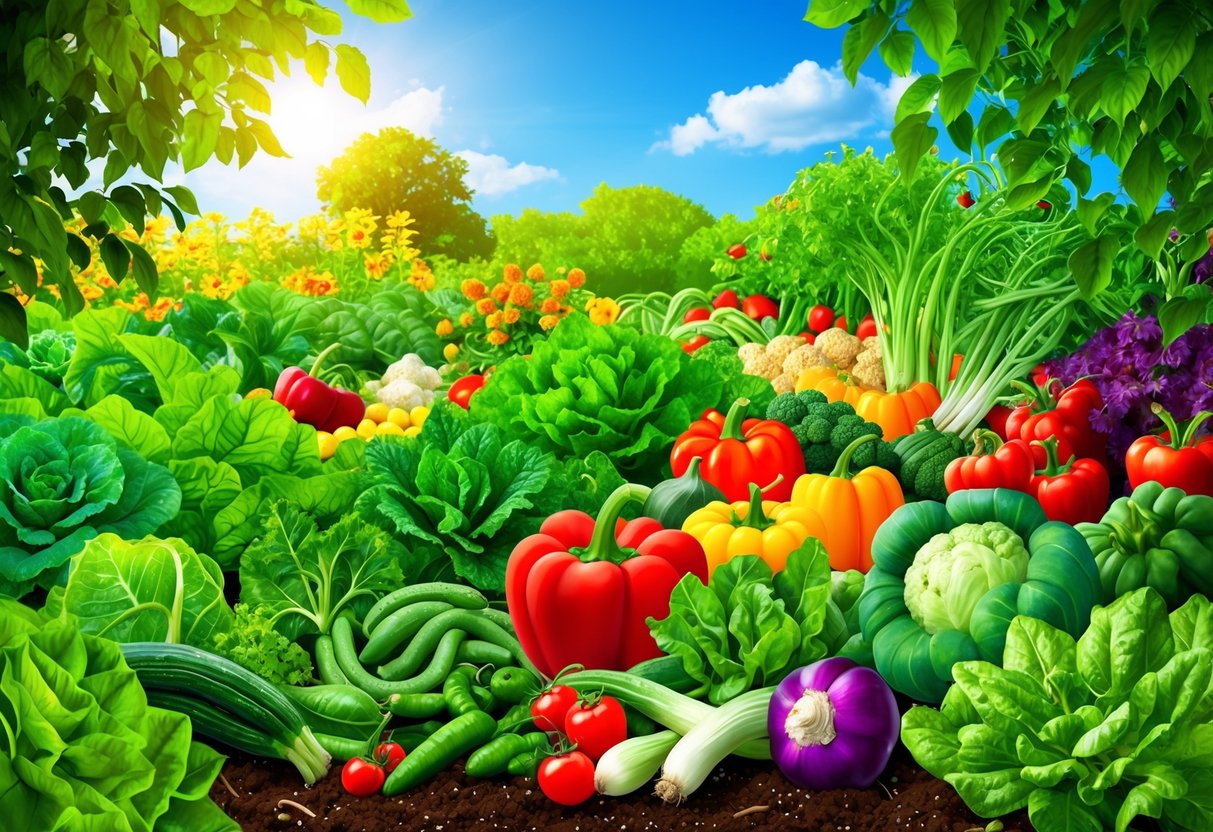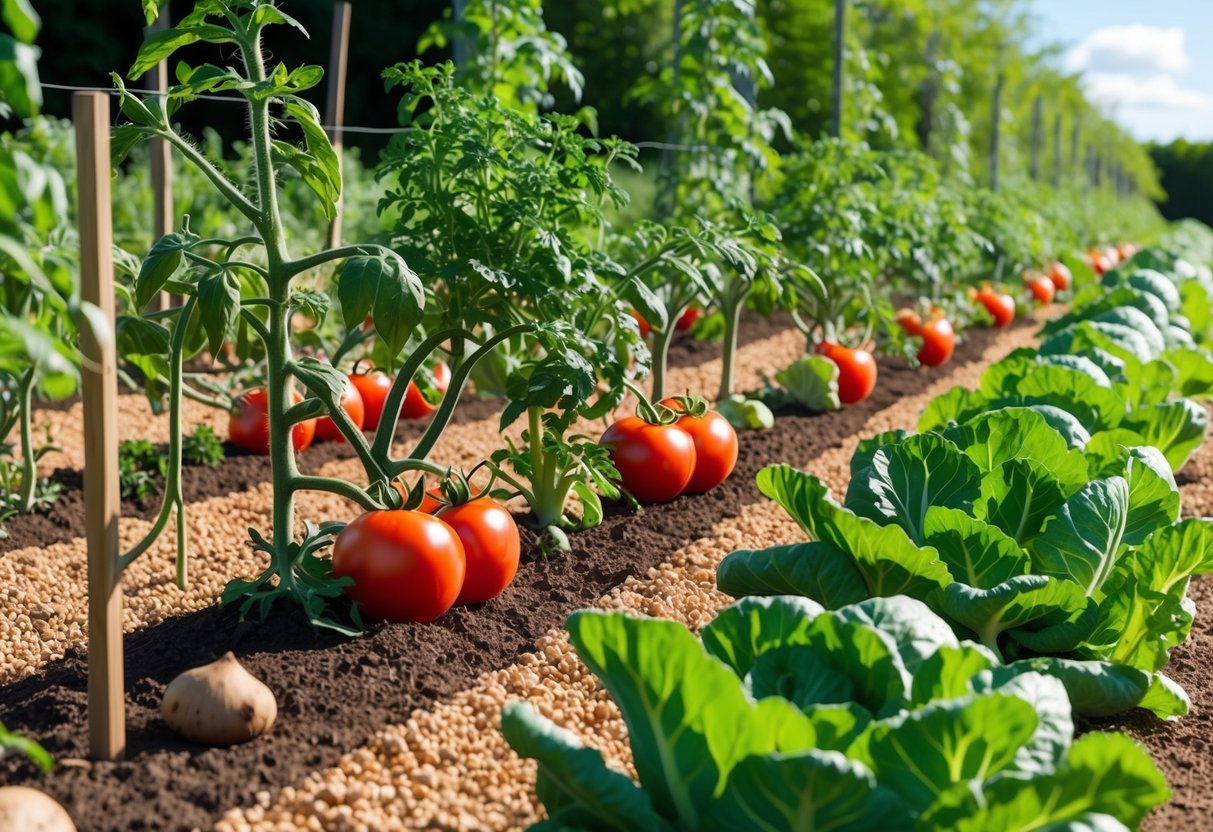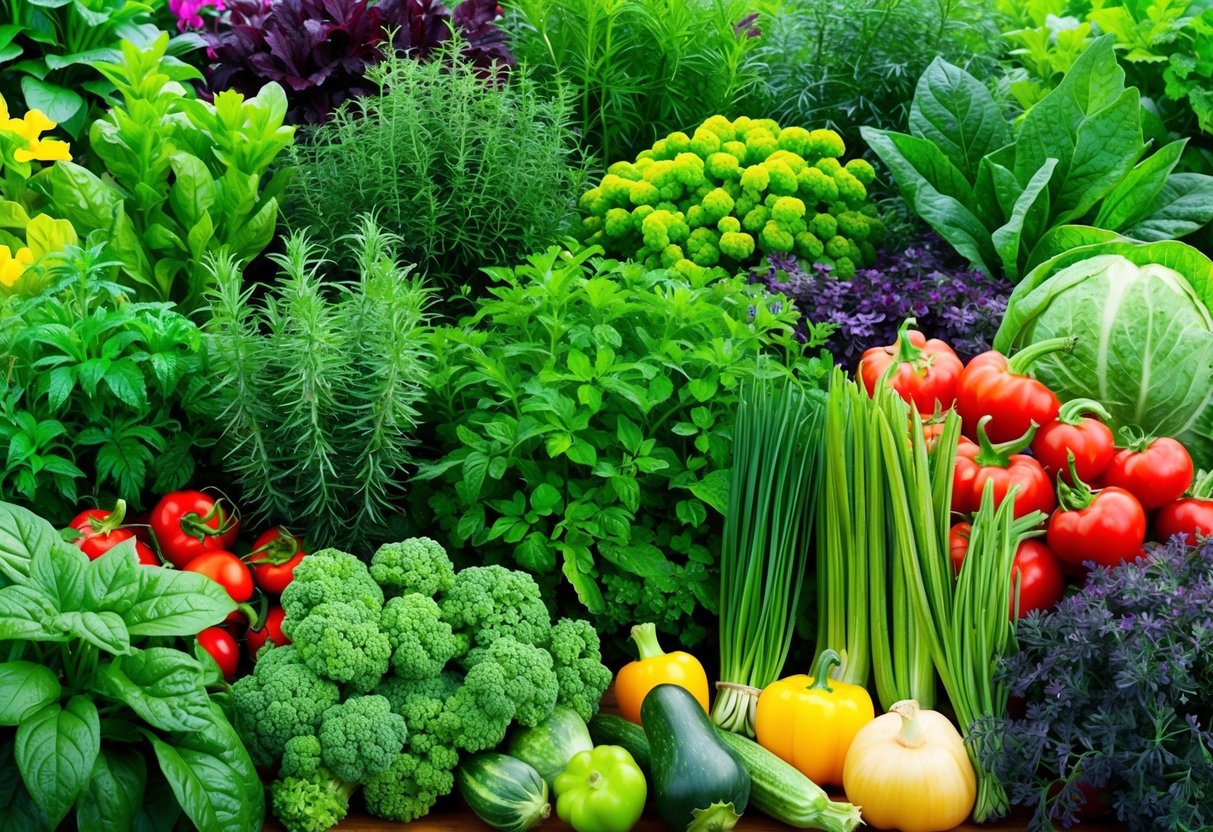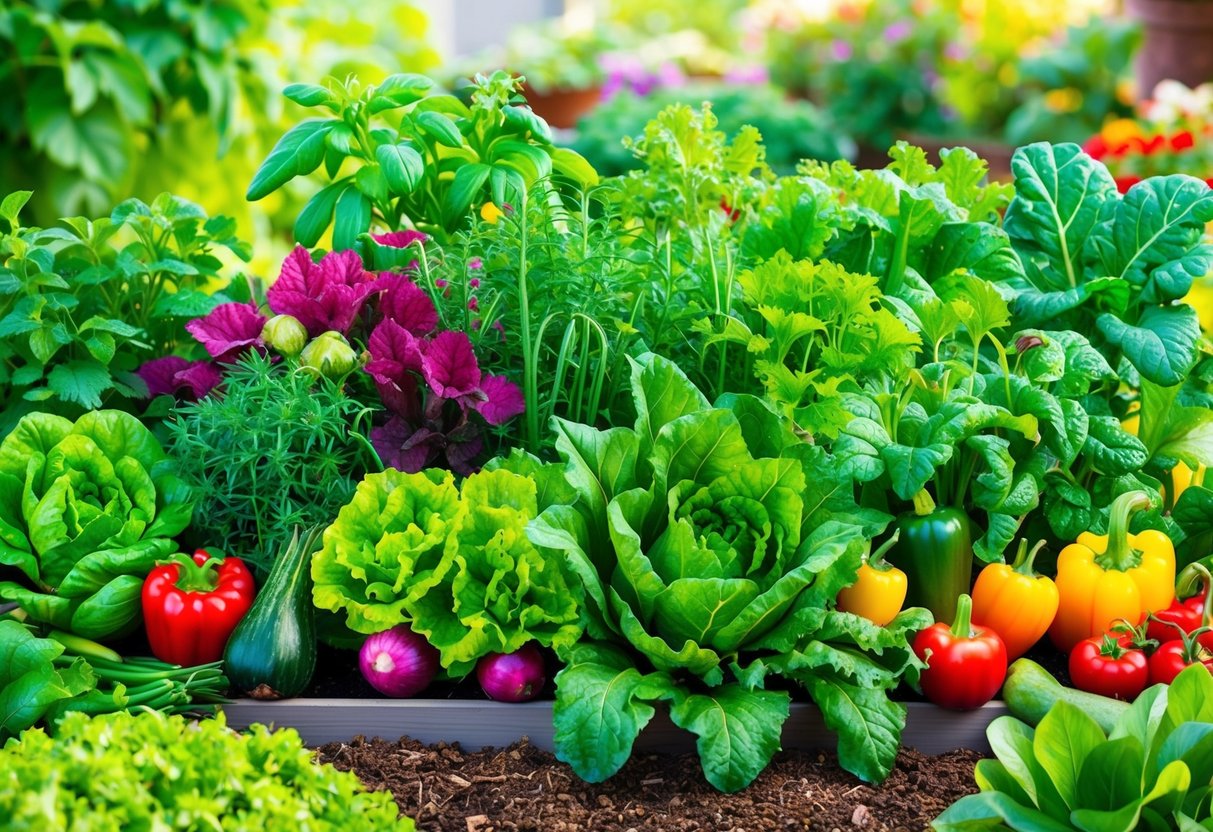
Cultivating Tomatoes, Roots, and Cruciferous Vegetables

Achieving vibrant flavor and nutrient-rich vegetables hinges on choosing the right varieties and providing optimal growing conditions. Careful timing with planting and harvesting is also important.
Healthy soil, regular maintenance, and proper spacing are essential to maximizing taste and yields for gourmet harvests.
How to Grow Tomatoes for Optimal Flavor
Tomatoes flourish in well-drained soil and full sun, requiring at least 6 to 8 hours of daily sunlight. They need consistent watering, but the soil should not become waterlogged.
Raised beds or large containers help promote good drainage and root development for more flavorful fruit. Set tomato plants deep, burying part of the stem to encourage strong root systems.
Support vines with stakes or cages to keep fruit off the ground and minimize disease risk. For enhanced flavor, choose heirloom or organic tomato varieties and avoid harvesting too early—allow fruit to fully ripen on the vine for the best taste.
Mulching helps retain moisture and regulate soil temperature. Removing any suckers (side shoots) concentrates energy into fruit production.
Take care to avoid cultivating too close to roots, as this can hinder water uptake and stress the plant. More tips on home garden tomato care can be found in this guidance for growing tomatoes.
Root Vegetables: Carrots, Beets, and Radishes
Root vegetables like carrots, beets, and radishes require loose, deep, and stone-free soil to enable straight, healthy root development. Consistent watering is crucial, especially during dry spells.
Proper thinning after seedlings emerge ensures each plant has enough space to grow. Carrots and beets benefit from slightly sandy soil with balanced nutrients—avoid over-fertilizing, as too much nitrogen encourages leaf growth at the expense of roots.
Radishes mature quickly and can be planted in succession every few weeks for a steady, flavorful harvest. Partial shade can be tolerated by some leafy root crops, making them versatile for different garden conditions, as noted in the Mississippi Vegetable Gardener’s Guide.
Pick roots when they reach optimal size; leaving them too long in the ground can affect texture and flavor.
Growing Broccoli, Kale, and Cabbage
Cruciferous vegetables such as broccoli, kale, and cabbage thrive in cool weather and require soil that is rich in organic matter. These crops demand regular watering and even moisture, especially as heads begin to form.
Applying mulch helps reduce weeds and maintain soil temperature. Space plants adequately in rows or blocks to promote air circulation.
Use row covers or floating fabric to protect young plants from common pests such as cabbage worms. Kale can be picked continuously as leaves reach edible size, while broccoli and cabbage must be harvested before they bolt or develop loose heads.
Crop rotation is vital for preventing soil-borne diseases in brassicas. Adding compost boosts both growth and flavor.
For best results, start seeds indoors or sow directly in early spring or late summer for a fall harvest. This ensures steady, tender, and nutrient-rich produce.
Fresh Culinary Herbs and Their Role in Gourmet Gardening

Culinary herbs transform homegrown vegetables by adding layers of aroma and flavor. Fresh herbs like basil and chives are valued not only for their unique tastes but also for their adaptability and ease of care in home gardens.
Essential Herbs for Flavorful Harvests
Growing a diverse selection of culinary herbs is essential for enhancing meal options. Each herb brings something different to the table, such as the sweet, peppery note of basil or the mild, onion-like tang of chives.
Key gourmet herbs include:
- Basil: Offers a fresh flavor ideal for salads, pastas, and pestos.
- Chives: Provides a subtle bite for eggs, potatoes, and dips.
- Parsley: Brightens sauces and soups with its clean, slightly bitter taste.
- Thyme and rosemary: Infuse roasted dishes with earthy fragrances.
Most herbs can be harvested multiple times throughout the season since many, like basil and mint, thrive as cut-and-come-again varieties. This approach encourages stronger, bushier growth, ensuring a steady supply of fresh herbs for gourmet recipes.
Integrating Basil, Chives, and Other Favorites
Integrating fresh herbs into a gourmet vegetable garden is both practical and rewarding. Planting herbs close to the kitchen makes harvesting easy and supports daily cooking needs.
Grouping herbs by water and sunlight requirements boosts their productivity. Basil grows well in warm, sunny spots and prefers regular watering.
Chives are hardy and can be tucked into borders or containers, thriving in both full sun and partial shade. Parsley and thyme can also be interplanted among vegetables to support companion planting strategies.
For those with limited space, herbs can be cultivated in window boxes or small pots indoors. Well-drained soil, consistent pruning, and periodic harvesting ensure the best flavor and longevity of the plants.
For in-depth advice on preparing the soil and choosing suitable locations, visit this culinary herb gardening guide.
Organic Pest and Disease Management

Managing pests and diseases in gourmet vegetable gardens relies on prevention, close observation, and natural interventions. A combination of practical garden techniques and organic-approved controls helps protect crop quality while maintaining a healthy, chemical-free environment.
Preventing Common Pests Without Synthetic Pesticides
Healthy soil, crop diversity, and physical barriers are vital for preventing pest outbreaks. Gardeners can use row covers, netting, or even paper collars to block access to young plants and deter insects like cabbage worms and cutworms.
Regularly inspecting plants for eggs and larvae allows early removal before infestations spread. Attracting beneficial insects, like ladybugs and lacewings, enhances natural pest control and reduces reliance on commercial pesticides.
Companion planting with herbs and flowers such as marigolds or basil can also repel pests. Removing infested leaves and clearing plant debris diminishes habitat for future infestations.
For larger issues, gardeners may use organic treatments such as neem oil or insecticidal soaps, which disrupt pests while causing minimal harm to pollinators and humans. Implementing crop rotation further reduces pest buildup year after year.
More details on these strategies can be found in guides for controlling pests organically and organic pest control techniques.
Identifying and Controlling Plant Diseases
Fast identification is essential for managing plant diseases organically. Early warning signs, such as wilting, unusual spots, or mold, should be addressed promptly to limit spread.
Remove and dispose of affected leaves or entire plants if infections are severe. Maintaining wide plant spacing and good air circulation helps prevent fungal illnesses like powdery mildew.
Watering at the soil level, rather than overhead, reduces leaf wetness and disease risk. Using resistant varieties and rotating crops across seasons helps limit recurring problems with soil-borne pathogens.
Applying compost and organic mulch boosts soil health and strengthens plant defenses. When an outbreak occurs, gardeners can turn to solutions like copper-based fungicides or sulfur, which are permitted under organic standards.
Avoiding unnecessary synthetic pesticides supports beneficial microbes and predators in the ecosystem. More information is available in university publications on insect pests and management.